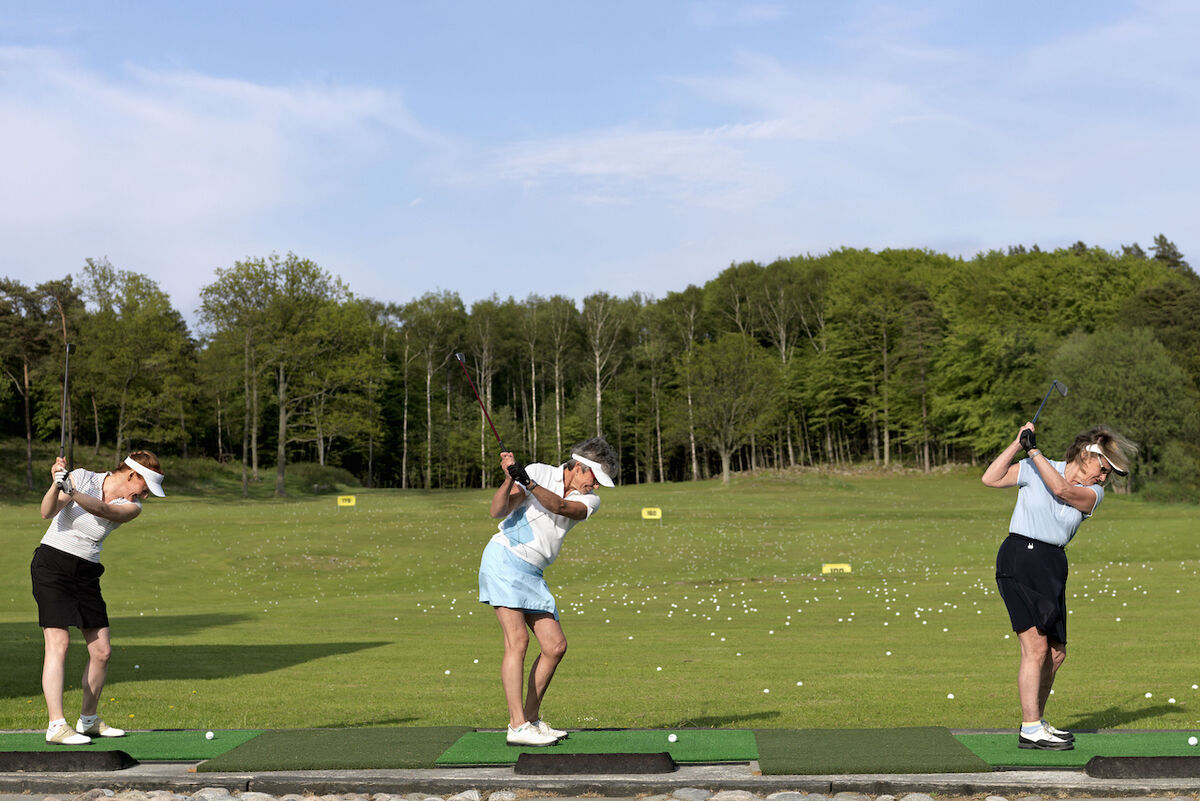Driving Range Tips for Beginners

It is common to see both beginner and seasoned golfers head to the practice range and immediately haul out the driver in an effort to pound the ball as hard and as far as possible, giving little thought to swing technique or structure to the practice routine.
While there is nothing wrong with using your driver on the practice range, this is not the preferred club with which to begin your practice round. The goal of the range play is to first loosen up stiff muscles, establish a rhythm and to select different targets on the range using different clubs.
Get to know your clubs. The range is a great place to discover the distance you can achieve with each club. Use these few drills effectively to add purpose and structure to your practice routine that can ultimately help you in your game.
Warm Up Exercises
Always begin your practice round with about 10 minutes of warm-up exercises by stretching and preparing the muscles for the physical exercise your body is about to endure. Warm up both the upper and lower body, giving special attention to your back, to help give you a fuller range of motion in your swing and help eliminate injury.
Aim and Alignment
Begin your practice round by placing two clubs or alignment sticks on the ground. Lay one club perpendicular to the target line for correct ball positioning, and lay the second club parallel to the target line for accurate alignment. Place the ball outside the parallel club, and straddle the perpendicular club.
Starting first with your sand wedge, aim at your target and hit several balls using your sand wedge, then pitching wedge, focusing on making solid contact with the ball and incorporating a smooth rhythm.
Mid-iron Shots
Once you have grooved a smooth rhythm using your sand and pitching wedges, move up to your mid-irons. Pick different targets on the range using your five, six and seven irons and hit about a dozen shots, focusing again on solid ball striking, aim, alignment and great balance, timing and tempo.
Fairway Woods and Driver
Turn your attention now to your fairway woods, and finally your driver. Use about 70 to 80 percent of your power, focusing on rhythm, balance and making solid contact with the center of the club face. Practice using the various targets on the range.
Develop a pre-shot routine. Standing behind the ball, pick your primary and intermediate targets. Envision the ball's line of flight. Take a few practice swings, step into the shot, aim the club face to your immediate target and swing.
Chip and Putt
After using your driver on the range, warm up with a variety of chip shots around the practice green. Try to simulate the kinds of shots you might experience on the course. Practice chipping up close to the pin, then putt down. Each chip shot has a slightly different landing spot, which results in a much more effective putting routine than hitting a half dozen balls in a row from the same spot into the cup.
Driving Range Safety Tips
One or two trips to the driving range should be on the schedule even when you are playing two or more times a week. Going to the driving range gives the golfer an opportunity to practice and improve. An hour or two at the driving range should be a safe experience, but golfers must adhere to some basic driving range safety rules.
Stay in or Behind the Stall
Every golfer does it. You're at the range and you've hit several strong shots in a row. As a result, you lose concentration for awhile and you dribble one off the tee. It goes maybe four or five yards out in front of you and you are tempted to jump out in front of the stall, quickly pick up the ball, then start hitting again. Don't do it. In the three seconds you are moving, you could get hit with a shot from a golfer who unloads an errant shot. It's not worth taking a golf ball in the temple just to get one extra ball to hit.
Driving Ranges Without Dividers
Driving ranges without dividers are scary. While they are generally not as tightly confined as other ranges, it is somewhat disconcerting to see another golfer standing next to you who may be a rank beginner trying to drive the ball down the fairway.
In this case, do not stand in the next stall. Find one that has no neighbor on either side. If you tense up when you hit the ball because you are afraid of getting hit with the ball or hitting another golfer, you are not doing your game any good.
Avoid Lefty Next to Righty
This is a situation to be avoided at all costs. If you are at a range and you are right-handed and find yourself swinging opposite a left-hander, you are in an awkward situation. Not only do you have to be concerned about taking or receiving an errant shot, but the fact that the other golfer is swinging in your field of vision is disconcerting. Even if there is a divider, having someone's swing in your view is distracting and can be unsafe.